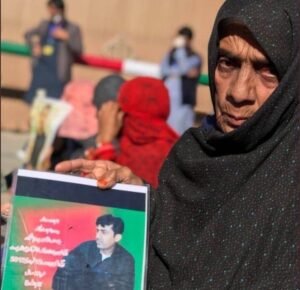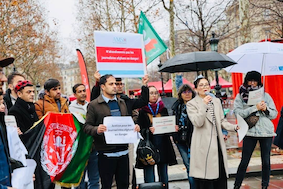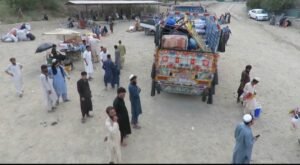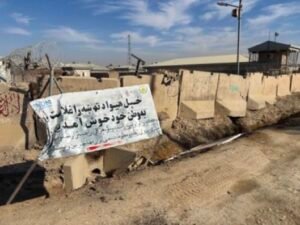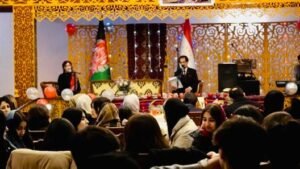From Quetta to Kabul: A Double-Edged Repression
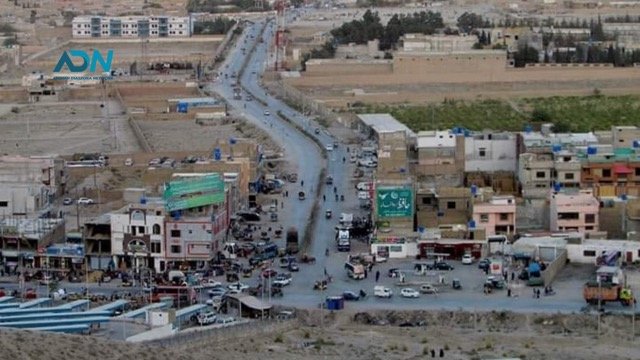
Photo: @Human Rights Council of Balochistan for ADN
By Nasir Khattak
Across South Asia’s western frontiers, a disturbing symmetry has emerged—one that links the repression of Baloch voices in Pakistan’s restive southwest with the treatment of Afghan refugees and dissidents along its contested borderlands. Though distinct in ethnic and geopolitical terms, both groups face the same state machinery: enforced disappearances, surveillance, intimidation, and legal erasure. A closer examination reveals how these two theatres—Quetta and Kabul—are in fact different faces of the same repressive policy architecture.
The Balochistan Laboratory
For over two decades, Balochistan has been subjected to some of Pakistan’s harshest internal security measures. Long-standing grievances about underdevelopment, political marginalisation, and resource exploitation have been met not with dialogue, but militarised control. According to the Voice for Baloch Missing Persons (VBMP), over 5,000 individuals have gone missing since 2001, many of them students, journalists, and community activists. Independent estimates suggest the number may be far higher.
A symbol of this struggle is Mahrang Baloch, a medical student turned civil rights activist, whose father and brother were both abducted. In December 2023, she led a 1,600-kilometre “Baloch Long March” from Kech to Islamabad, demanding accountability for the disappeared. The protest was met with baton charges, detentions, and the forced removal of demonstrators back to Balochistan. Despite global support—including messages from Malala Yousafzai and Greta Thunberg—the Pakistani state remained defiant.
Journalists in Balochistan face a similar fate. Razzaq Gul, a reporter for Express News, was found murdered and tortured in 2012. Countless others have faced harassment, blacklisting, or exile. Media outlets are either silenced or forced to toe the state narrative under threat of terrorism or cybercrime charges. In a recent and telling example, a seven-year-old Baloch child was booked under terrorism laws for sharing an anti-government video—an episode that drew rare bipartisan condemnation.
Afghan Refugees: A Mirror Image
While Pakistan’s policies in Balochistan reflect internal repression, its treatment of Afghan refugees and critics of Taliban rule underscores an external extension of that same logic. In late 2023, Pakistan resumed forced deportations of over 1.4 million Afghans, citing the expiry of Proof of Registration (PoR) cards. Human rights groups have condemned these actions as inhumane and destabilising, especially given the risks awaiting returnees under the Taliban regime.
Among those targeted are female journalists, former civil servants, ethnic Hazaras, and civil society figures who had fled Taliban rule in search of safety. Many had pending asylum applications, yet found themselves detained, harassed, or deported without due process. Afghan dissidents living in Pakistan—particularly those critical of Islamabad’s alleged support for the Taliban—have reported surveillance, visa denials, and veiled threats from intelligence agencies.
Pakistan’s suppression of Afghan voices is not limited to border control. Even Afghan asylum seekers in urban centres like Islamabad and Quetta face barriers in accessing healthcare, education, and legal aid. Many are undocumented due to bureaucratic inertia, leaving them vulnerable to extortion or detention. As of mid-2025, international agencies have documented hundreds of families living in fear of nighttime raids and summary expulsions.
A Shared Architecture of Control
What links these two geographies—Balochistan and the Afghan borderlands—is a common strategic doctrine. Dissent, whether from a Baloch student or an Afghan refugee, is construed not as a democratic impulse, but a security threat. This securitised lens has allowed Pakistan to deploy paramilitary forces, intelligence agencies, and legal tools (such as sedition and terrorism laws) to silence opposition with impunity.
The repression is not only physical but institutional. Courts often defer to the state on national security grounds. Media is censored or self-censored. And political leadership—civilian and military alike—either justifies the actions or looks away. The effect is chilling: a shrinking civic space for both domestic minorities and foreign asylum seekers.
A comparative framework makes this clear:
| Aspect | Balochistan | Afghan Voices in Pakistan |
| Targeted Communities | Baloch students, activists, journalists | Refugees, women activists, ethnic Hazaras |
| Methods Used | Enforced disappearance, sedition laws | Deportation, visa denial, surveillance |
| Legal Tools | Anti-terror, cybercrime laws | PoR expiry, immigration law |
| Resistance Movements | Baloch Long March, student protests | NGO advocacy, limited diaspora activism |
| State Justification | Counter-insurgency, national security | Illegal immigration, external influence |
The Global Response—And Its Limits
While some international attention has been drawn—particularly during the December 2023 march—the broader response remains muted. The United Nations, Amnesty International, Human Rights Watch, and the European Parliament have all issued statements, but few tangible consequences have followed.
This silence is partly strategic: Western powers continue to see Pakistan as a necessary, if difficult, partner in counterterrorism and regional stability. China, which has deep economic interests in Balochistan via the China-Pakistan Economic Corridor (CPEC), has consistently backed Islamabad’s line, making coordinated international pressure difficult.
Meanwhile, voices like Mahrang Baloch continue to be heard—at least for now. Her arrest during the 2024 Islamabad protests, and subsequent international coverage, forced the courts to take notice. But as past precedent shows, legal interventions offer only temporary reprieve unless systemic reforms follow.
A Binary That Must Be Broken
From Quetta to Kabul, the tools may differ, but the goal remains the same: to eliminate alternative narratives that challenge Pakistan’s internal order or external ambitions. In both theatres, repression operates not as an aberration, but as an extension of policy.
Ignoring these parallels is to misread the regional crisis. The future of democratic space in Pakistan—and the stability of South Asia—hinges not only on countering terrorism, but also on defending the rights of those who dare to speak out. Whether Baloch or Afghan, their voices are not just cries for help; they are warnings of what impunity looks like when left unchecked.
Nasir Khattak specializes in the China-Pakistan region, with a particular focus on the economic relations between the two countries.
Note: The contents of the article are of sole responsibility of the author. Afghan Diaspora Network will not be responsible for any inaccurate or incorrect statement in the articles.

